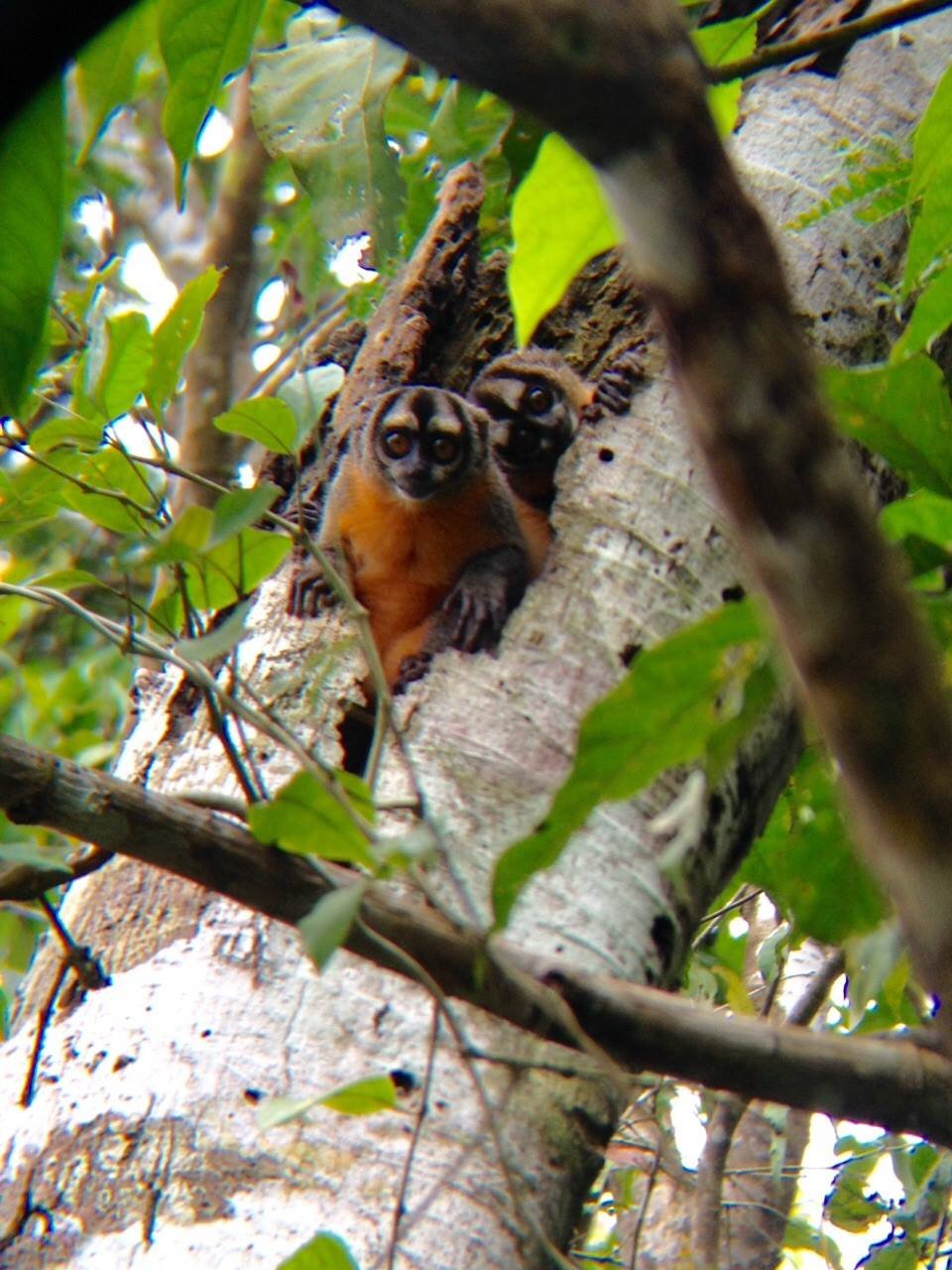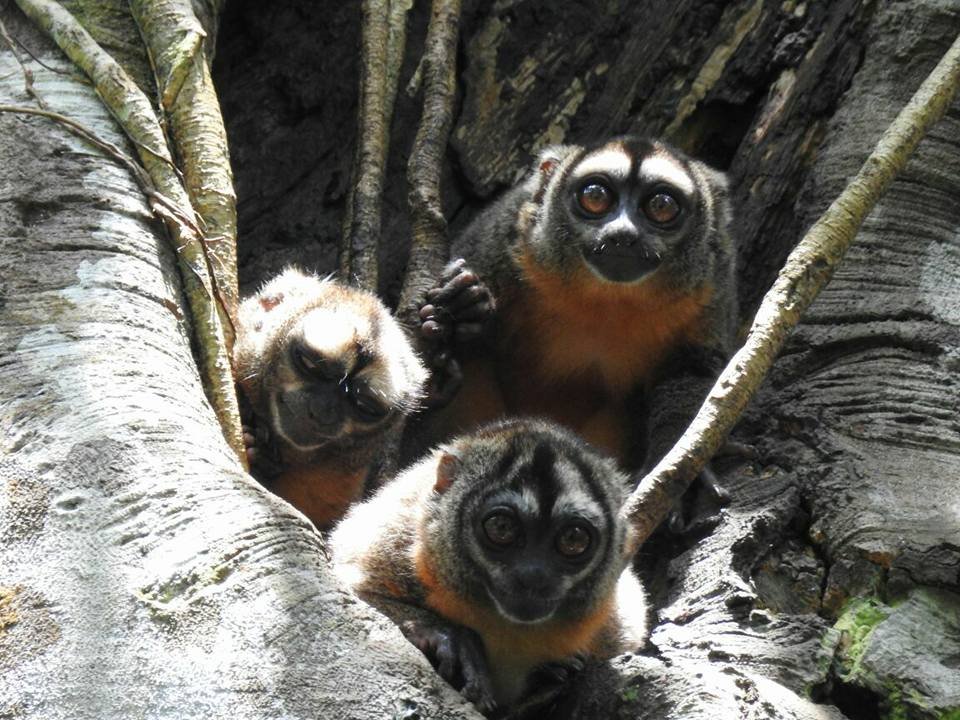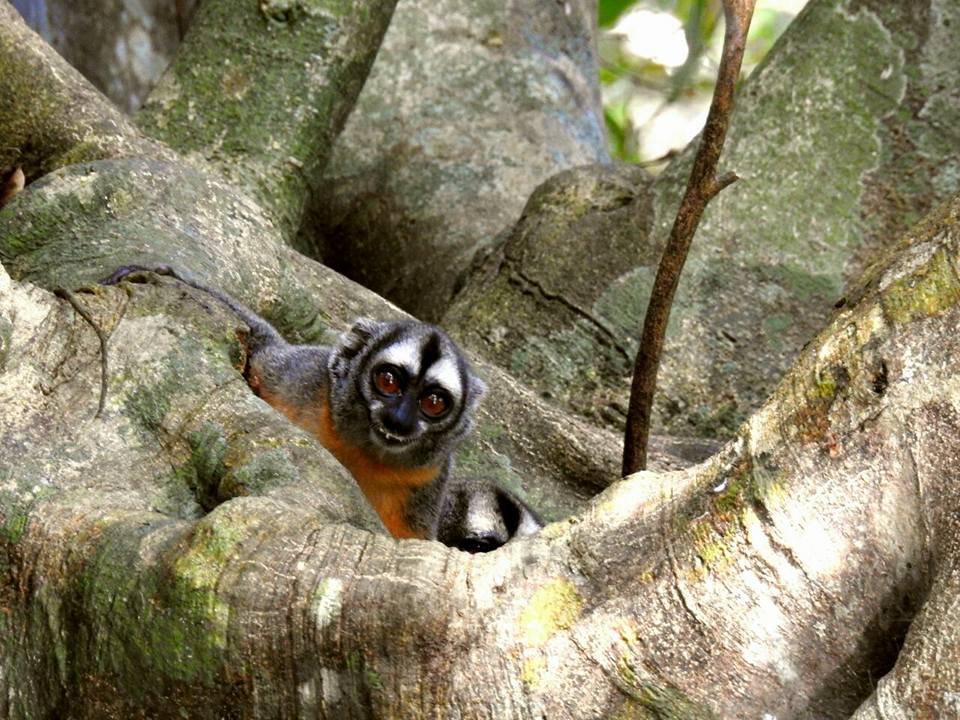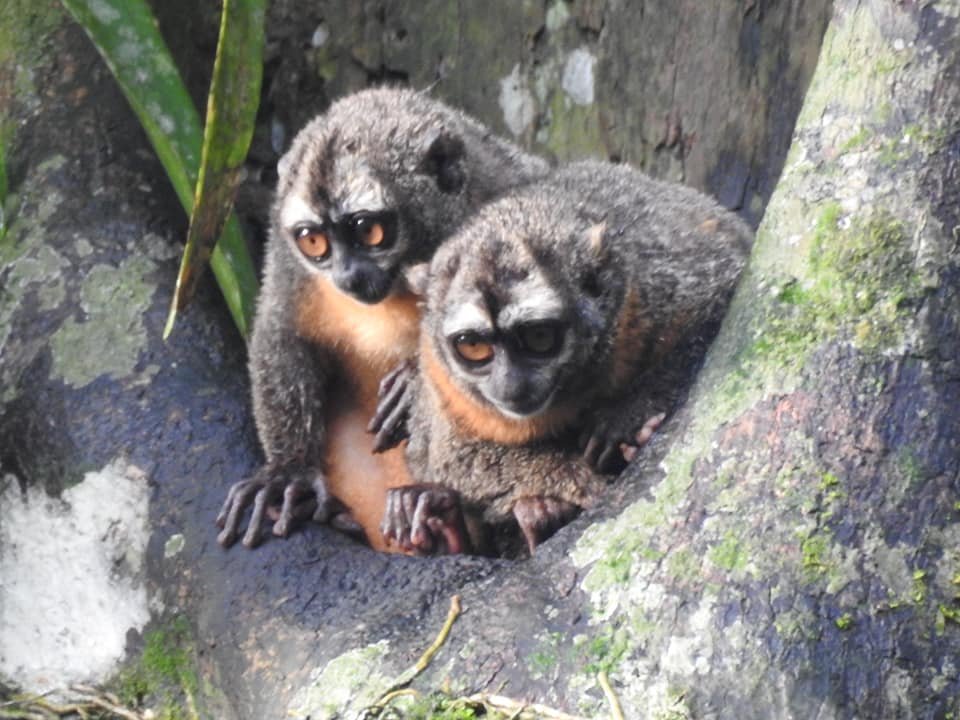night owl monkeys
Night Owl Monkeys
Night monkeys, also known as owl monkeys, are unique primates . Weighing between 455 to 1254 grams, they have very large brown eyes that are disproportionate to their round faces surrounded by three large stripes. Their large have specialized rod bipolar cells in their retinas allowing them to see effectively in low light conditions. Their fur is dense and woolly and is gray on the back and yellow or orange-brown on the belly. Their tail is non-prehensile, meaning it cannot grasp objects however, it helps them balance when moving through the trees. They also have long, slender fingers with expanded pads on the tips and slightly opposable thumbs, as well as, a sac underneath of their chins that can be inflated for vocalizations .
Night owl monkeys are found from Panama to northeastern Argentina, spanning a significant portion of Central and South America.They are primarily arboreal, meaning they live in the trees, spending most of their time in the forest canopy, surrounded by a dense layer of trees and vines. They use the vines not only for movement but for shelter as well. They have a preference for large canopied fruit trees, especially during the fruiting season. Night owl monkeys can tolerate a range of temperatures, from relatively cool conditions at higher elevation to the hot, humid environments of the Amazon Basin.
Owl monkeys are very unique , New World, monkeys. They are the only New World monkey species that are predominantly nocturnal, meaning they are active primarily at night time. Their activity levels are strongly influenced by the moonlight, with peak activity occurring during bright , full moon nights. Owl monkeys have also developed an ability to navigate familiar routes Lenin in darkness, likely using a combination of olfactory cues, and memorized paths. Olfactory cues are scents or smells that act as a signals , providing information and a chemical response. A type of sensory clue.
While nocturnal, owl monkeys are social animals and communicate with each other through a variety of vocalizations and scent marking. They establish and defend territories with these vocalizations and scent markings as well. Owl monkeys typically live in small family groups of two to five individuals. This usually includes a pair of adult males and females, along with their offspring. They are known for being monogamous and forming very strong pair bonds.
Night owl monkeys spend most of the their time foraging and hunting. They are primarily fruit-eaters. They prefer small, ripe fruit and are adept at finding them in the canopy. However, they also consume flowers, nectar insects and leaves when when fruit is scarce Owl monkeys are also skilled insectivores and are able to spot insects through a combination of hearing and excellent vision, as well as, scent. They are particularly good at finding nocturnal insects like locusts , moths and beetles.
Owl monkeys typically sleep in tree hollows, dense areas of vines or in the middle strata of the forest, specifically on platforms and branches. These sleeping sites are usually in the canopy, around 30 feet above the ground. They have a variety of potential predators that can prey on them, especially if they are not well hidden in their sleeping spots including wild cats, jaguars, arboreal snakes , owls and eagles. Their large eyes , adapted for low light conditions, have allowed them to develop a natural defense and see in shades of gray, enhancing their ability to detect movement and shapes, which is helpful for spotting predators.






